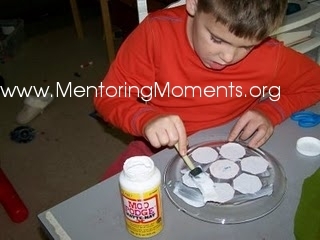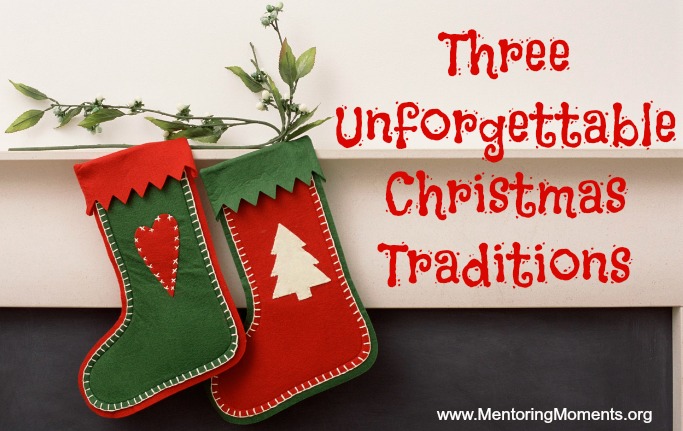My children and I made these great decoupage plates for a Passover celebration last year. This was a fun and easy project which could easily be adapted for any number of uses, from making a special plate for a birthday child to a Christmas gift for grandma.
Supplies:
1 clear glass plate for each person (purchase at Dollar Tree or Walmart)
1 Coloring page of Seder meal foods (or other pictures if you are adapting this for a different use) and crayons or markers for each person
1 handout showing proper placement of images on the Seder plate
1 jar mod podge
foam paint brushes
tissue paper
*There are instructions at the bottom of this post for using fabric instead of tissue paper
Instructions:
The Coloring page for the Seder food is too small if printed as is. I copied the image and placed it in a Word for Windows file, then enlarged it about 150% and centered it on the page so that one printed page would have all six foods on it. You may want to enlarge the page showing proper placement as well.
1) Print out a copy for each plate. Have the kids color them however they want and cut them out.
2) Most Seder plates seem to have an image in the center, so the children may want to color an additional circle freehand for that purpose. Some of us made Stars of David, and one boy made a candelabra for the center of his plate. If the plates have a price tag stuck to them, make sure you get it well cleaned off and completely dry before step 3.
3) Paint a thin coat of mod podge (my kids call it “mom podge”) on each circle, on top of the colored image. Don’t worry, if the coat is thin, it will show through fine when the glue dries! Place the images in the appropriate spot on the plate, face down so that you can see them from the front of the plate.
Remember that when you turn the plate over, the left side will now become the right side of the plate! So make sure you place the pictures in a mirror image. It helps to start with the middle, top and bottom images. Turn the plate over frequently to check that the letters aren’t upside down and that the images look correctly placed. Allow the circles to dry.
4) When the circles have dried on the plate, center it on a piece of tissue paper, making sure that the side you want to see is facing the plate, not you! Cut around the edge of the plate, leaving about an inch of paper extending beyond the plate.
5) Next, cover the entire backside of the plate with another coat of mod podge, including the back of the images and all the way around the edge of the plate. Gently smooth the tissue paper from the center toward the edges of the plate, pressing gently down and out to smooth out any wrinkles. If the tissue paper tears, don’t worry! Just put a little more mod podge on that spot and cover the hole with a tissue paper patch.
6) Turn the plate over and gently cut away all excess tissue paper. If there is a bit of paper that you just can’t seem to cut close enough, just push it back down on itself so that it sticks to the underside of the plate.
7) Cover the entire back of the plate with one last coat of mod podge. This will seal the tissue paper and make it more durable (not dishwasher safe, though!)
These plates should not be submerged, but can be wiped off with a damp cloth on the front side.
*Making Fabric Decoupage Plates
Someone gave me a lovely Easter plate years ago that had been decoupaged with fabric. The technique is much the same:
1) Wash and dry the plate thoroughly. Center it on printed fabric (cotton or poly/cotton works best). Move the plate around until the image on the fabric looks right.
2) Cut out the fabric, leaving about an inch or so of margin around the edge of the plate.
3) Paint the back of the plate with the mod podge, coating it well. Turn the plate upside down and press the fabric onto the back, making sure to check that the image looks right on the front side. Gently press out all the bubbles and smooth the fabric to the edge of the plate using your fingers.
4) Generously cover the back of the plate and fabric with another coat of mod podge. Allow it to dry, upside down. When the mod podge is completely dry, trim the excess fabric with a razor blade or craft knife.
To leave a comment:
- If you are reading this post in email form, click the article headline. This will take you to the article on MMCW’s website.
- Scroll down until you see the box entitled ‘Speak Your Mind’.
- Enter your name, email (it will not be published) and your website or blogsite if you have one (you do not have to have one).
- Click on the big empty space and then begin typing your comments.
- When you are done, click ‘submit comment’. That’s it! We look forward to hearing from YOU!
About Molly Evert
Writer Molly Evert is a wife and homeschooling mom to 6 kids, who range in age from 2 to 18. She runs an educational website, My Audio School (http://www.myaudioschool.com), providing access to the best in children's audio literature. She also blogs at CounterCultural Mom (http://www.counterculturalmom.com) and CounterCultural School (http://www.counterculturalschool.com).
- Web |
- More Posts(146)













